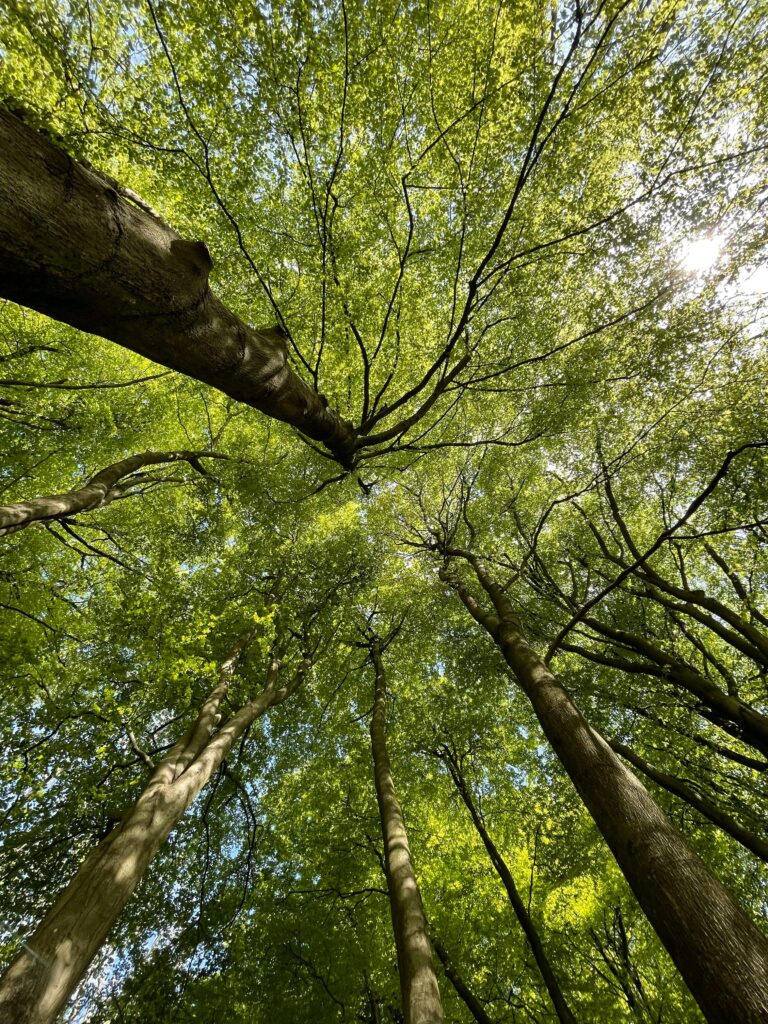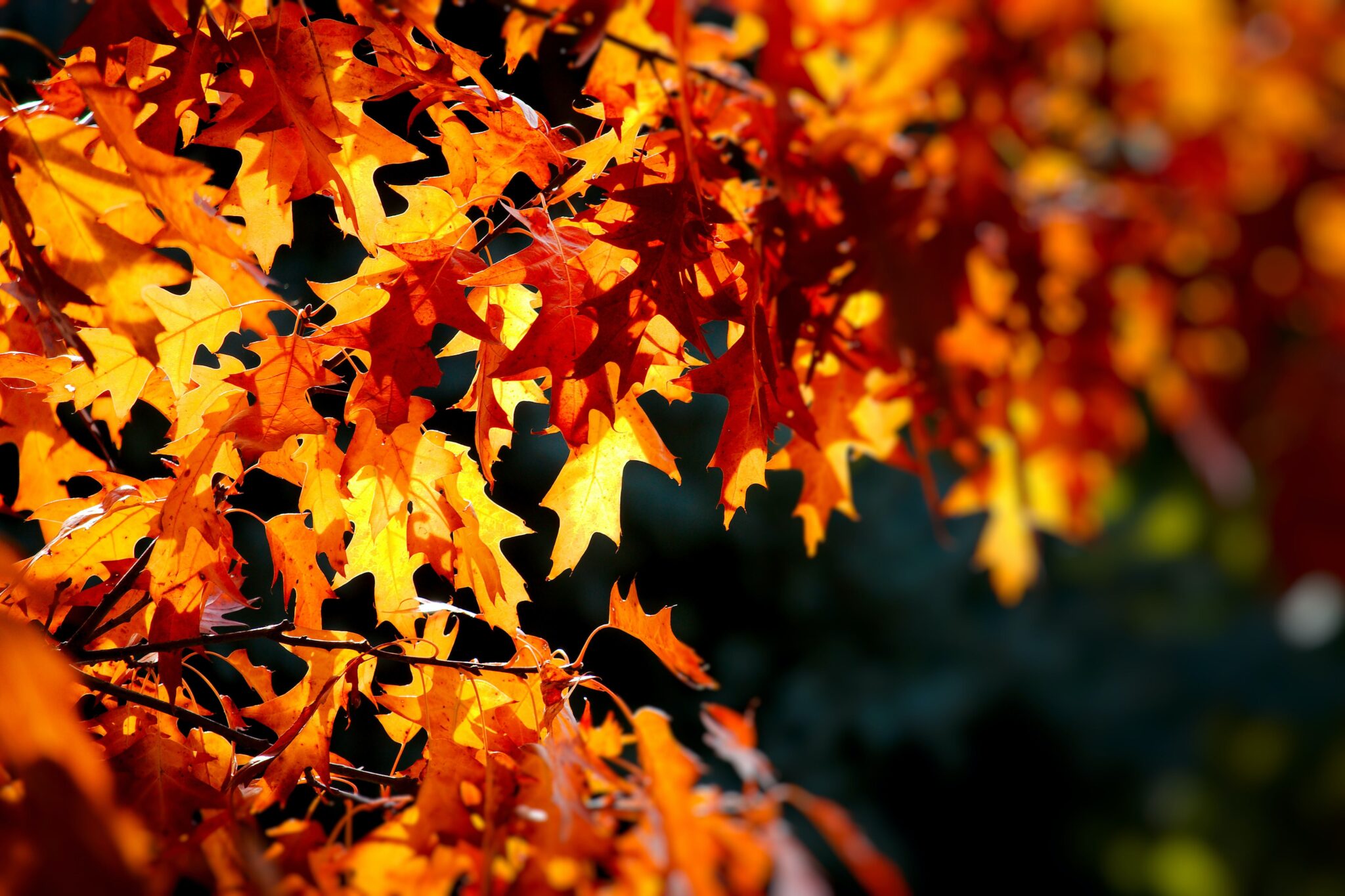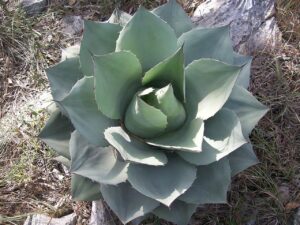
Gardeners must learn to operate on multiple time scales at once, simultaneously planning weeks, months and years ahead. Want tomatoes in July? Plant them in April. Bluebonnets in April? Start planning in October. A flowering shrub in 2027? Start shopping now.
The most long-term thought goes into trees. Magnificent and magical, trees can take a decade or more to reach their potential. That’s a long time to wait, but the benefits could last generations.
If you think your yard or garden would benefit from a tree–for shade, as a colorful accent, or to anchor a corner of your garden–now is the time to act. “The best time to plant trees is in their dormant season, so between November and February,” says Garden Projects Coordinator and ISA-certified arborist Stephen Haydon. “It’s possible to plant container-grown trees at other times, but the roots will grow best during the dormant season.”
Selecting the Right Tree
Take some time and do some research to select the right tree. You need to take into account numerous variables, including how large the tree will grow and how much water it will require. Think about the purpose the tree will serve in your yard. Do you want a large shade tree to help reduce heat on your house? A decorative tree that will bring color to your landscape? A small tree as an accent?
Haydon suggests focusing on native trees and trees known to do well in our area. Also keep in mind the intended location. Weeping willows, for example, are lovely, but they require a lot of water and should be planted near a stream bed or pond. Conifers shouldn’t be planted near swimming pools because their needles can clog pool equipment. Make sure you understand how big a large tree is likely to grow before planting it too close to your home to avoid limbs rubbing on your roof or roots cracking your foundation.
You can find trees of various sizes at nurseries and tree farms. When asked about the best size of tree to plant, Haydon explained that small trees establish more quickly and easily than larger trees. He likes the saying, plant a $10 tree in a $100 hole. Nurseries label trees based on the size of their containers; a 35-gallon tree is about the largest size most people can get home and into the ground with some help. If you want a larger specimen, you will likely need the nursery to deliver and plant the tree.
Tips for Planting
Trees for North Texas
Best Large Shade Trees:
Live oak
Shumard red oak
Chinaquapin oak
Pecan
Cedar elm
Chinese pistache
Best Small Accent Trees
Yaupon holly
Possumhaw holly
Crape myrtle
Japanese maple
Mexican plum
Redbud
Golden raintree
Best Evergreen Trees
Yaupon holly
Loquat
Eastern redcedar juniper
Live oak
- Check drainage. Before planting your tree, check for proper drainage. First, dig a hole to the depth of the root ball and fill it with water. The hole should drain within 24 hours. If the hole retains water for more than 24 hours, find an alternative location for your tree or contact a drainage specialist.
- Prepare the hole and plant. Assuming you are planting the tree yourself, start by inspecting the tree to determine the point where the trunk emerges from the soil. If it looks like a broomstick coming out of the ground, it is planted too deep in the nursery container. The root flares, where the root meets the trunk, need to be exposed. Often, nursery-grown stock is planted too deep in the pot.
- If the tree is container-grown, it is acceptable to remove it from its container before you start reducing the top of the root ball to expose the root flares.
- If working with a ball and burlap tree, do not remove the burlap. The tree is meant to be planted with the burlap on including a wire basket if it has one. If you remove the burlap and the root ball falls apart, it could be disastrous. Ease the burlap away from the top of the root ball and work on exposing the flares from there. Once you have released the top of the burlap do not pick up the tree by the trunk, pick it up from the basket or twine that holds the burlap together.
- Aim to dig a hole three times the diameter of the root ball. Do not dig the hole any deeper than the depth of the root ball after root flare exposure, otherwise it may sink later. The root flares must remain exposed after planting. Exposing the root flares is important and will affect the long-term vigor of the tree. Your tree will thank you.
- Don’t worry about improving the soil. Haydon doesn’t like to amend the soil that you backfill around the tree, since the tree roots might not want to grow outside of that bubble of amended soil and won’t have any incentive to grow to spread and wide and deep.
- Stake the young tree. Haydon suggest trees should be staked for two years. By this time, the tree should be established enough that the stakes can be removed. It is important not to leave the stakes in longer than necessary because as the tree sways and flexes, it grows stronger like a muscle. If the tree is not given the opportunity to flex, the trunk may become brittle and risk breaking in high winds.
- Mulch. Add mulch to about three inches deep and beyond the extent of the root ball. This will keep the soil moist and encourage roots to grow outward. However, it is important not to pile mulch up against the trunk or cover the root flares.
- Watering for the first two years. Trees need to be watered deeply. Traditional lawn sprinklers probably won’t be adequate, says Haydon. “Thorough deep watering is better than frequent sprinkling,” he says. If you have an irrigation system, bubblers can be added to each tree. Otherwise, plan to hand-water with a water breaker attached to the hose at least twice a week, perhaps more during very hot spells. Haydon’s favorite time-saving device for watering newly planted trees is a gator bag that is placed over the root ball and filled with water; the bag then discharges the water from the bottom over several hours. Don’t forget to keep an eye on your newly planted trees during winter dry spells, and be sure to water before a hard freeze.
Trees require a significant investment in money and effort in their first few years. The good news is that, once established, they can grow and thrive for generations. Pecan and red oak trees can live as long as 300 years or even more.
So give a gift to your future self and to those who will live in your home long after you are gone. Think long-term and plant a tree this season.







